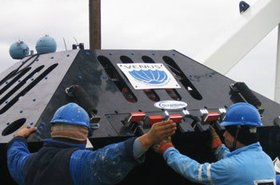Mitigating geopolitical risk across global operations requires focus, collaboration, and leadership. Subsea cables, where physical and digital networks converge – as the global digital footprint expands, it may present the single largest risk of the modern world.
The explosive growth of digital connectivity has a hidden vulnerability: the undersea cable network. These critical lifelines for global communications are increasingly under threat, jeopardizing trillions of dollars in economic activity.
Recent allegations of deliberate damage to subsea cables have underscored the fragility of this critical infrastructure, as recently flagged by The Australian National University’s Tech Policy Design Centre.
The Asia-Pacific region, a digital powerhouse, is particularly vulnerable. Australia, a key link between Asia and the West, faces heightened risks from both cyberattacks and cable disruptions.
The global subsea cable network
About the size of a garden hose, modern fiber optic cables send data at almost the speed of light. A vast network of subsea fiber optic cables traverses the Asia Pacific region and this cable network carries approximately 99 percent of the internet traffic intra-regionally and to the rest of the world.
The volume of subsea cable construction is the highest it’s ever been. More than $6 billion worth of new cables have entered service since 2022, connecting Asia and Oceania.
However, the global network still has points of significant vulnerability. While new cables are being laid at a record pace, the concentration of these cables at landing stations creates single points of failure. This is because multiple cable networks meet at terrestrial access points called landing stations. As crucial aggregation points, they are high-value targets for disruption or interference. For example, there are 16 major cables that traverse the North Pacific from Asia to the US. At some points, 15 of those 16 meet at a single landing station along the route.
This subsea infrastructure is a conduit for threat actors, facilitating a truly global reach, no matter where these groups originate. These threat actors are not necessarily financially motivated to compromise the networks, as Verizon’s 2024 DBIR suggests Espionage (as a motive) by national state actors accounts for 25 percent of cases.
Collaboration and cooperation vs ownership and access
Due to the growing threats, not just within the Asia Pacific region but from other malicious sources, there is a growing genuine interest by governments of this region to collaborate on building resilience and hardening infrastructure within the subsea cable networks.
There is also a growing concern around hyperscalers (major technology companies like Microsoft, Google, and Amazon) making significant investments in building their own subsea cable infrastructure, hence going from being customers to owners, which increases nation-states’ dependencies on these corporations to secure critical infrastructure.
As these hyperscalers play an increasingly central role in digital infrastructure, countries' dependency on these providers presents opportunities for robust defence and highlights potential risks from over-dependency on a single partner. To mitigate this, diversifying partnerships and building redundancy are essential steps toward a resilient infrastructure.
Australia, in particular, should also consider its position on submarine cable partnerships as part of a broader economic security policy. This includes weighing up the risks that advanced threats and infrastructure disruption pose to its core industry sectors, such as mining, and agriculture. Due to the increased digitization of these sectors, there is a risk they could be targeted by malicious actors seeking to disrupt essential supply chains. This calls for even growing collaboration amongst trusted suppliers and partners from trusted countries to ensure network resiliency, scalability, and security.
Addressing these vulnerabilities requires deep collaboration across governments, industries, and technology leaders to enhance resilience in subsea infrastructure, such as working with a trusted category of suppliers from trusted countries. Proactive engagement with global tech leaders and allies, as well as its local initiatives in cyber defense, can lead the way in setting new standards for secure infrastructure.
As such, subsea cables have recently been recognized as the foundation of economic growth, security, and national growth by NATO and the EU, who are prioritizing the security of subsea cables and gas pipelines. The joint statement between The United Nations General Assembly and Five Eyes countries (which includes Australia) includes recommendations for advanced cooperation between owners of these assets as well as closer government and industry coordination.
Addressing next-generation cyber security threats
New technologies, specifically generative AI, will supercharge the efficiency of cyber attacks across our converged networks. Automated, hyper-scaled pretexting campaigns with ultra-real personas will target employees, customers, consumers, partners, brands, and operations.
Likewise, as people remain the biggest asset in building cooperation and collaborative responses to these advanced threats, they also remain our biggest vulnerability. And as the world increasingly digitizes operations - from advanced, mission-critical manufacturing to the local convenience store - the attack surface expands, and resilience continues to be tested.
As part of its role in the global pivot to digital resilience, Australia needs to meet the future by recognizing the inherent fragility of its infrastructure, as well as its leadership in investment, innovation, and production within the Asia Pacific region. It holds an esteemed position in global trade flows - both digital and physical.
As the cyber and physical worlds merge, we must move beyond system redundancy; Australia can (and must) build for true resilience, and plan for survivability.








